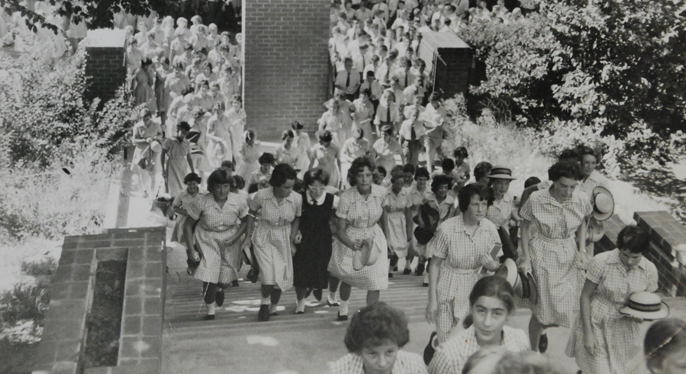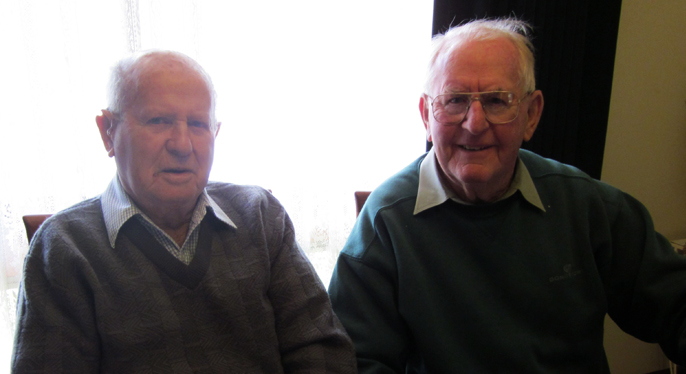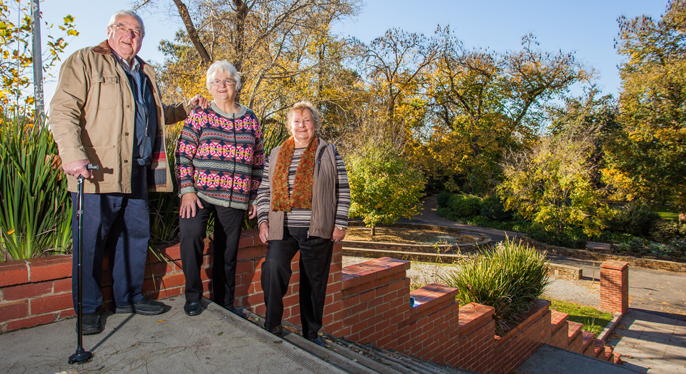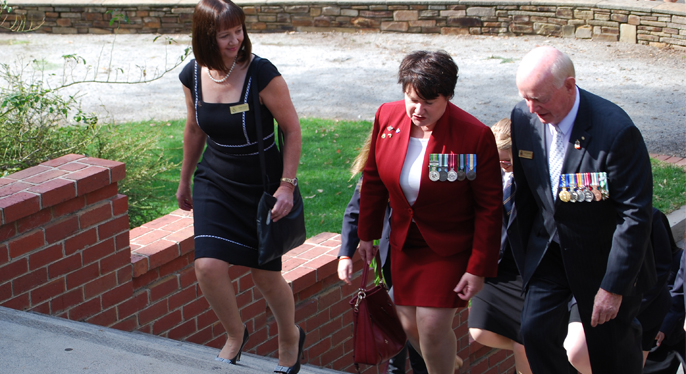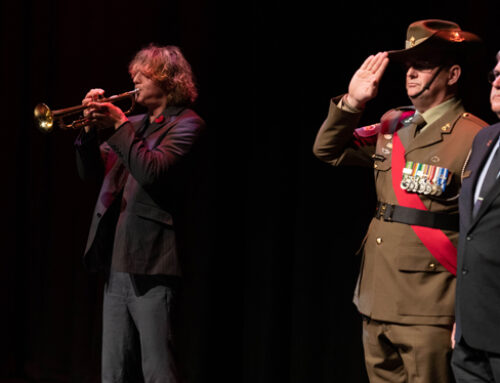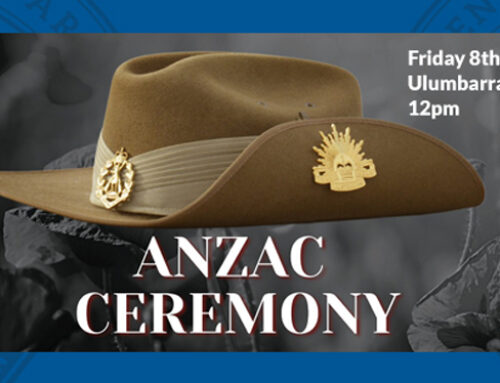The Memorial Steps and the men who built them
Compiled by Wendy Talbot and Jenny Moloney
Coming out of the war years, there was a need to provide a fitting war memorial at the school to commemorate the service and sacrifice of students and staff. It was decided to construct a series of steps that would create an impressive front entrance to the school.
The feature, to be known as the Memorial Steps, was mostly funded by donations from ex-students and fundraising by the Mother’s Club, Men’s Auxiliary and other school-based groups. Since their construction in 1956, many individuals have made their way up and down the steps into and away from ‘The School on the Hill’.
Working on the project was Ken Smith, who had been a student at Bendigo High School, graduating in June 1948, at the age of 14. Ken had moved directly into an apprenticeship with James Michell & Sons, a local building and construction company after seeing an advertisement for the job in the paper.
It was a time when the key priority for young people was to secure work, rather than pursue a particular career pathway – the training came AFTER securing a job.
Ken went to Business College at the School of Mines at night during this time for book keeping, typing and woodwork. It was called a Bound Apprenticeship, with the apprentice paying 10 shillings a term for two nights a week trade training for a set period of time. Ken’s father wasn’t keen on him being employed in this way because he wasn’t sure Ken was set on a future in building and construction. He thought he might end up farming.
The job of constructing the Memorial Steps came to James Michell & Sons, run by Ralph Michell. The company operated out of a site at 58 Queens St. Ralph’s father had set up the business at the time of the Depression. Ralph (b. 23rd June, 1920) had commenced his work life at the age of 13, after schooling at Long Gully, Violet Street and Camp Hill (which was operating as an elementary school). Ralph was keen to put Ken on, as Ken’s father had worked for Ralph’s.
Both Ken and Ralph remember the raw site for the Memorial Steps as being a very steep incline, with rocks, moss and fill making it an extremely unstable area. The site required three months of work to stablise the underpinnings to stop the whole structure moving down the hill. The piers went down to ten feet, all done before the days of modern machinery. Back breaking hard manual labour was needed to make all the stages happen. Concrete had to be mixed and transported on-site; there was no ReadyMix service to assist! Both men are confident that there was nothing unusual or notable buried under the steps.
Ralph served in World War II from 1942 to 1945, with six months in the Middle East and two years in New Guinea. It was when he came back from the war that he took over his father’s business. When asked whether there was a sense of occasion about building the Memorial Steps, Ralph said that it “really just a job to be completed”.
“In those days there was no sense of heritage,” he said. “Things were built and things were demolished, then the next job got done. Value is only seen in hindsight; developed through use, connections and traditions.”
This has certainly been true for the Memorial Steps and they way they have become part of the tradition of the school and its community.
During the building of the steps, Ralph employed all types of building and construction workers, including bricklayers, cabinet makers, and general labourers.
”All up there would have been about 31 ongoing employees on the payroll,” he said.
His brother, James Michell Jnr, also worked for him and it was he who was in charge of the project at Bendigo High School. The brickwork and the gates were also completed by the company – the bricklayer was Peter Crawford.
The company and the two men completed some other notable construction jobs about Bendigo. An easily identifiable one being the Beaurepaire Tyre Services Pty. Ltd. garage, erected in Hargreaves Street in 1958 (now the Good Loaf bakery)
Ken worked for Ralph for 13 years before moving on to form his own business. He and Ian Ross, who also worked on the Memorial Steps project, set out on their own and secured many jobs.


